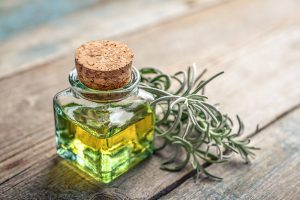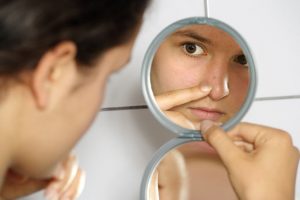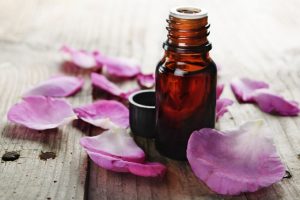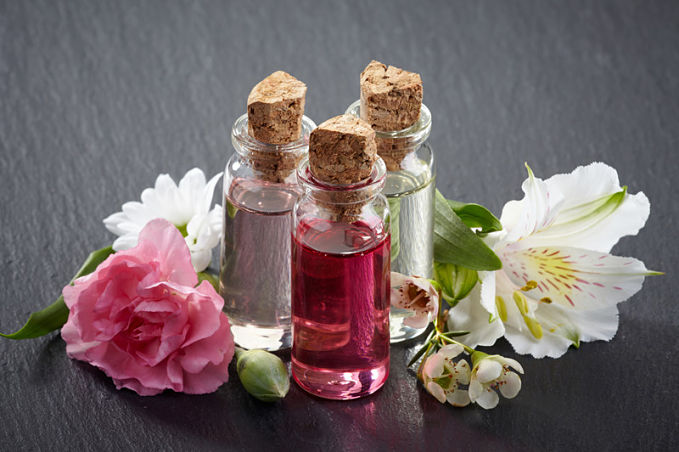People have used aromatic essential oils for thousands of years and many cultures have valued them for their therapeutic potential. Essential oils are highly concentrated plant essences that carry the distinctive fragrance of the plant they are made from. Despite their name, they don’t contain oily or fatty components. In fact, most essences are rather watery and their color often ranges from completely clear to dark yellow.
Natural aromatic substances are used for healing purposes, both on a physical and psychological level. There are around 150 different essential oils suitable for aromatherapy use today. These are extremely versatile substances, each with its own unique chemistry. Some of them contain hundreds of active compounds which can stimulate certain body systems while calming and relaxing others at the same time. Here’s an in-depth guide to essential oils and how to use them.
Essential oils guide
Getting started: choosing and buying essential oils
Starting out with essential oils isn’t difficult. It will require, however, some research on your part.
It’s best to begin with just a few essential oils. If you don’t know whether you’ll like certain scents, visit a health food store near you and ask to smell some samples. Moreover, ask yourself some questions: Do you intend to treat a specific ailment? Do you want to create a certain recipe? Will you be using the oils on a baby or small child? Are you interested in assembling an aromatherapy first aid kit?
Look for quality products. Unfortunately, not all essential oils are created equal. In fact, you should be aware that the term is legally used to describe various products, including diluted oils, man-made chemical materials, and natural blends designed to imitate an actual essential oil.
Always opt for essences that are 100 percent pure. Pure, undiluted essential oils are sold in dark glass bottles to protect them from sunlight. The bottles should also come with dropper tops to protect the product from exposure to air.
Check labels and prices. The only ingredient mentioned should be the essential oil itself-no other ingredients should be present. Pricing is another indicator of quality. Some essential oils are more valuable than others and this is normally reflected in their price. If all the aromatherapy products from a specific manufacturer are priced exactly the same, consider this a red flag.
Carrier oils
Carrier or base oils are used to dilute essences before application. Keep in mind that few essential oils can be used on the skin directly. You can also find them in a variety of products such as body lotions, bath oils, moisturizing creams, and lip balms. Most are vegetable, nut, or seed oils with a delicate aroma and perfect for moisturizing and nourishing the skin.
There are many carrier oils available, each with several nutritional and therapeutic benefits. Your choice will, of course, depend on your own aromatherapy goals.
For example, sweet almond oil is a rich source of vitamins B2, B6, and E, and a great choice for people with sensitive skin. Aloe vera is a fantastic moisturizer and a good ingredient for wound or burn remedies. Calendula has anti-inflammatory properties that make it ideal for healing salves and lotions. Other popular carrier oils include coconut, jojoba, avocado, macadamia, evening primrose, grape seed, and sesame oil.
Blending your essential oils
Blending is a fantastic way to make the most of your essential oils’ therapeutic properties. Make combinations that suit your personal tastes and needs, but always be mindful of the correct proportions. An aromatherapy blend usually contains 1 to 3 percent pure essential oil and 97 percent carrier oil. Plant essences are very powerful, so a little goes a long way.
When you blend two or more essential oils take into account their synergies. These are particular combinations that can greatly enhance each individual oil’s healing properties. Find recipes for blends that address specific issues, tweak them as you like, or create your own.
You will also probably be interested in scent compatibility. Perfumery notes can be very helpful in this regard. There are top notes, the very first fragrances you can smell. These are fresh, light and airy, or sharp and penetrating. Bergamot, grapefruit, lemon, and orange are some examples.
Middle notes are great for balancing your blend and making it fuller and well-rounded. Essential oils like eucalyptus, chamomile, lavender, and marjoram fit in this category.
Finally, base notes are heavier, often earthy scents. They support the whole blend and keep lighter oils from evaporating. Patchouli, sandalwood, vetiver, and ylang-ylang are commonly used to that end.
Tools and equipment
Apart from your favorite essential oils and carriers, you might also want to invest in a few useful and inexpensive tools.
Proper containers such as dark glass bottles with airtight caps are a must have. Moreover, cream jars and glass bowls are useful for making various aromatherapy products.
Glass droppers are handy for measuring oils for specific blends and recipes.
Labels will help you keep your creations in order and avoid mix-ups.
Finally, you may want to have a notebook to write down all the recipes you find or create yourself.
Methods of application
There are numerous fun ways to make essential oils part of your lifestyle. All basic methods of application involve either direct/indirect inhalation or topical application of the oil onto the skin.
1. Diffusion
This is a fantastic way to create a pleasant atmosphere in your home or work space. Diffusion involves dispersing minuscule oil molecules into the air in the form of a fine vapor or mist.
Different essential oils will help you achieve different goals. Eucalyptus, juniper and rosemary can clear airborne pathogens and create a germ-free environment. If you want a peaceful and relaxed mood, try some frankincense or cedarwood.
Apart from the essences of your choice, you will also need an air diffuser. There are many options out there, ranging from simple evaporators to quite sophisticated devices. Whatever your choice, remember to follow the instructions that come with your product.
2. Direct inhalation
Inhaling an essential oil directly offers more exposure to the oil’s volatile molecules and has more immediate effects.
This method can be as simple as uncapping the bottle of your choice and taking two or three deep breaths. You can also scent a tissue using 2 to 3 drops of essential oil or blend and inhale deeply.
However, not all oils are meant to be breathed in directly, so make sure you research your oil before use.
3. Steam inhalation
This is a great way to alleviate sinus, throat, and chest infections, as well as allergies.
You will need a bowl full of steaming hot water, 3 to 5 drops of essential oil, and a towel to cover your head, shoulders, and the bowl.
Sit in front of the bowl with your eyes closed and breathe in for about 10 minutes.
Several oils, like eucalyptus, lavender, tea tree, and thyme, can relieve congestion and decrease mucus membrane inflammation with this process.
4. Essential oil baths
A scented bath can be a real treat for your body and mind. Add 3 to 6 drops of oil into the water while it’s running. You can mix it with a carrier oil. This serves two purposes: the oil molecules disperse into the water easily and your skin benefits from the extra moisture.
Try to enjoy your bath for at least 15 minutes to take full advantage of its benefits. In addition, a shallow bath (called a sitz bath) is often used to treat yeast infections, hemorrhoids, and urinary-tract infections. In this case, you fill the bathtub halfway with warm water and dilute your essential oils as you would in a larger bath.
Hand and foot baths are also good options for targeting specific ailments in those areas.
5. Showers
Steamy showers can greatly benefit from the addition of aromatherapy. Try out different combinations and fragrances depending on your current needs and mood.
Basil and rosemary can compliment and energizing shower early in the day. If you require a positivity boost, use uplifting oils like bergamot, lemon, and rose. Put 5 to 8 drops of oil on a warm, damp washcloth and place it in the shower area.
Another good idea is to add essential oils in unscented shampoos, conditioners, and body washes, or, even better, create your own completely natural bath products.
6. Compresses
You can treat various local ailments with a compress infused with essential oils. It can be either hot or cold, depending on the problem.
Hot compresses work well for skin infections, as well as muscle or joint issues. On the other hand, a cold application is ideal for sprains and sports injuries, since it offers relief to the inflamed area. It is also great for treating headaches.
To make a scented compress, add 3 to 4 drops of essential oil to a bowl of hot or cold water. Use a washcloth to apply as needed. Since some essential oils can irritate the skin, remember to dilute them before use.
7. Massage
This is a great way to relax, nourish and heal the body. You can enjoy a full body massage carried out by a professional aromatherapist, learn a few basic techniques with a massage partner, or even self-massage in the comfort of your own home.
Try a hand, feet or pulse point massage. Essential oils are absorbed much faster when you apply them on your pulse points.
Don’t forget to dilute your oils beforehand. For a massage oil, a good rule is to use 12 to 15 drops of essential oil (or blend) for every ounce of carrier oil.
8. Hair care
Essential oils can do wonders for your hair. Add a few drops in the final rinse or even enhance an unscented shampoo or hair conditioner. You can also massage the scalp using a nourishing base oil like olive, jojoba, or sweet almond along with 3 percent essential oil.
If you can spare the time, don’t wash your hair right away. Leave the mixture on for a couple of hours.
Rosemary, chamomile, and West Indian bay are great essential oils for healthy hair growth. Others, such as tea tree and bergamot, help fight off dandruff.
9. Skin oils, lotions, ointments, and balms
Make your own natural body lotion using essential oils and a nourishing base such as jojoba, avocado, or apricot kernel oil.
Rose and neroli are good for dry or mature complexions. Geranium, bergamot, and lemon can help with acne and oily skin.
You can also scent other beauty products such as a bland cream or a basic face mask. Ointments, balms and cream bases can be further enhanced with the addition of essential oils.
You can use them to treat a variety of skin conditions, such as eczema, psoriasis, bruising, and varicose veins. These homemade products are also great additions to your first-aid kit.
Storage tips
Proper storage is critical for maintaining your essential oils’ quality. Always keep them in dark airtight glass bottles. If they become exposed to heat, light, or oxygen, they will quickly deteriorate and lose their therapeutic potency. They are also highly flammable, so be very careful not to keep them anywhere near open flames.
Essential oils prefer cool environments, so if you have the space, keep them in your fridge along with your carrier oils. If your budget allows it, you could invest in an aromatherapy box. A sturdy container will protect your bottles from breakage and exposure to sunlight, and keep you well-organized.
Safety
Using essential oils safely should be your first priority. Since they are highly concentrated substances, you must always dilute them properly.
Research the oils you want to use and learn their properties and contraindications. It’s also a good idea to do a patch test before using an essential oil for the first time.
Never take essential oils internally without professional medical supervision.
Be very cautious when treating children, the elderly or people with certain conditions. For example, several essential oils should be avoided during pregnancy and breastfeeding. What’s more, some essences such as citrus oils cause photosensitivity, so you should plan the time of application and avoid sun exposure for at least 12 hours.
Sources
- Curtis, Susan, and Fran Johnson. Essential Oils: All-natural Remedies and Recipes for your Mind, Body, and Home. DK, 2016.
- Essential Oils Natural Remedies: The Complete A-Z Reference of Essential Oils for Health and Healing. Althea Press, 2015.
- Keniston-Pond, Kymberly. Essential Oils 101: Your Guide to Understanding and Using Essential Oils. Simon & Schuster, 2017.
- Lawless, Julia. The Encyclopedia of Essential Oils: The Complete Guide to the Use of Aromatic Oils in Aromatherapy, Herbalism, Health, and Well Being. Conari Press, 2013.
More on essential oils

The best essential oils for headaches and migraines

12 essential oils to treat the common cold

10 essential oils to prevent acne

12 essential oils for a better night’s sleep

How to use essential oils for concentration and better focus

13 top essential oils for managing stress and anxiety

